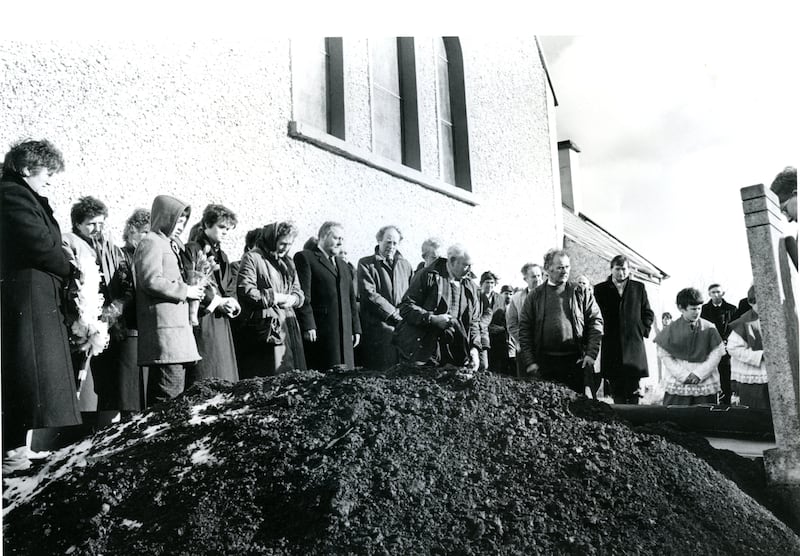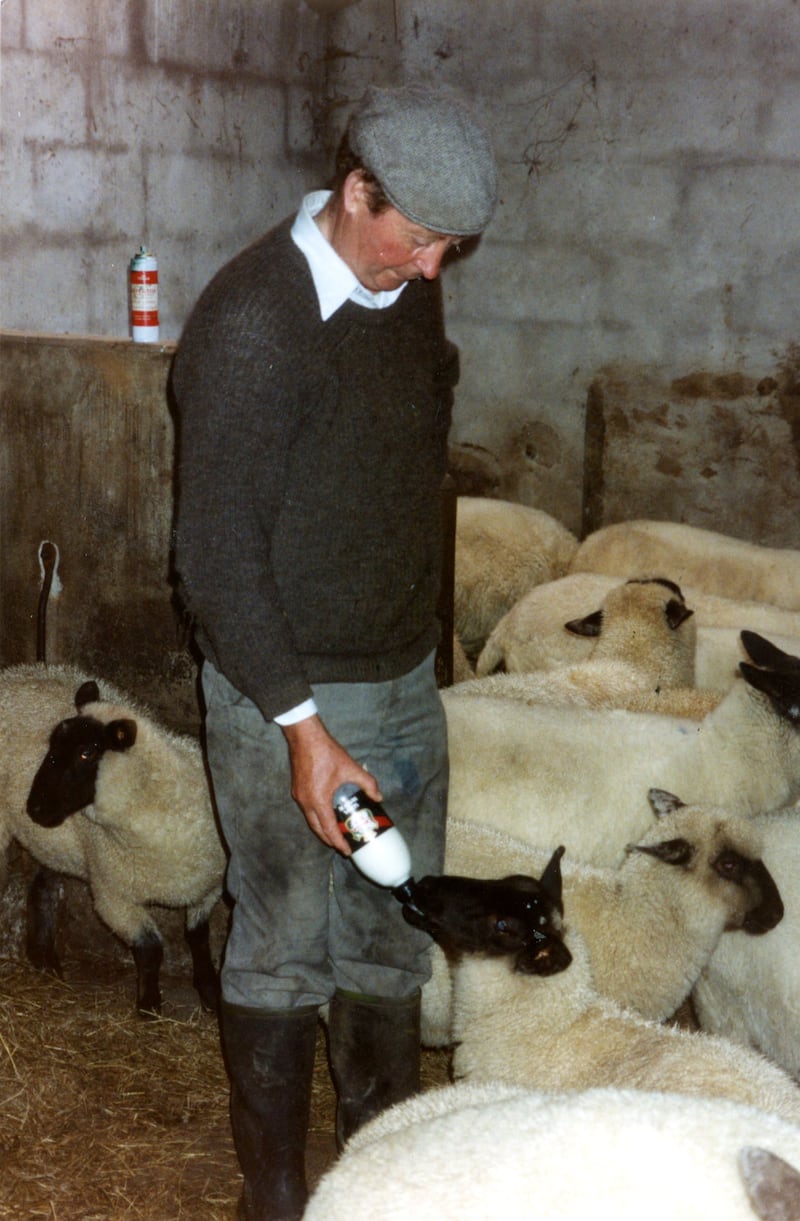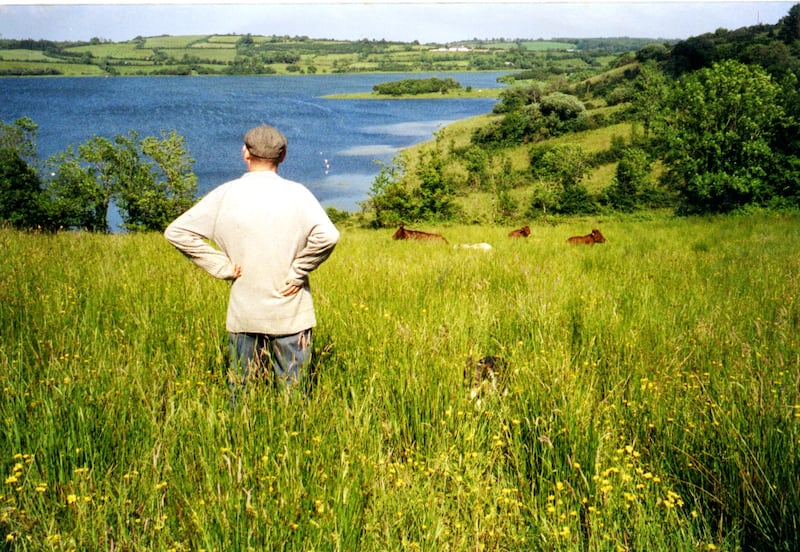I spent a week in the University of Galway in September, during the beautiful Indian summer weather, working on material that has recently been added to the John McGahern Archive.
Among the additions are letters from Charles Monteith, McGahern’s editor at Faber & Faber, fellow writers such as John Banville, Seamus Heaney, Brian Friel, John Montague, Aidan Higgins, biographer and literary critic Hermione Lee, and Patrick (the Bird) Swift, who was co-editor of X: A Quarterly Review.
It was in this latter journal that McGahern published his first prose, an excerpt from an unpublished novel, The End or the Beginning of Love, which prompted Faber to offer him a book contract. Ultimately, the writer decided to hold on to the original manuscript and replace it with a far superior novel, The Barracks, which was published by Faber in 1963.
There are a large number of photographs also, many of which were taken in and around the McGahern residence overlooking a lake in Foxfield, Co Leitrim, the setting for his last novel That They May Face the Rising Sun (2002) – the majority of these are most likely attributable to McGahern’s widow Madeline, who is a photographer.
READ MORE
I was particularly struck by one image featuring mourners (chief among them McGahern himself) gathered around the open grave of the writer’s uncle The Shah, as he is being lowered into the ground. The photo is in black and white and it captures beautifully the solemnity of the rituals surrounding an Irish wake and burial, which is so well captured in McGahern’s classic story, The Country Funeral.

The Shah’s real name was Pat McManus, a brother of McGahern’s mother Susan, and he appears in That They May Face the Rising Sun as the local garage owner and businessman who earned his moniker during the petrol crisis of the 1970s, when he had control over what was a very scarce commodity. He was always spoken of with much affection by his nephew.
Another photo that really appealed to me features a smiling McGahern feeding his cattle, very much at home in his role as part-time farmer. McGahern often claimed that he was a farmer who did a bit of writing and it is clear that he enjoyed being out on the land feeding cattle and taking in the beauty of the Leitrim landscape.

I always had the impression that Heaney and McGahern were close. Indeed, anything that Heaney wrote about McGahern’s work was extremely complimentary. For example, in an exchange that is reproduced in Frank Shovlin’s compilation of McGahern’s letters, the Nobel Laureate remarked in the wake of the publication of Amongst Women in 1990: “It is a work of heart-breaking purity and surety. … It wakened me and read me inside out.”
Similarly, writing from Oxford on October 21st, 1992, Heaney remarked: “And I think I should reiterate to you how your work makes us all carry our writing (and reading) heads a bit higher. The book of stories (he’s referring to The Collected Stories) is a real landmark.” On February 22nd, 2003, he praises McGahern “for the high achievement on That They May Face… Utterly imagined. A kind of scriptural lucidity and solidity, as if the whole thing were being foreseen and remembered at one and the same time. Perpetual light shines on it.”
This is high praise indeed, and yet it is not reciprocated by McGahern, as can be seen in a rather snide comment made in a missive to Joe Kennedy on January 17th, 1996: “I’m glad Seamus got the Nobel. Nobody will enjoy it more”. Writing to Paul Durcan (March 26th, 2006), just a few days before his death, he observed: “You must know that I have found no sustenance in Heaney’s verse for many years, and even the charm of the early work has worn badly”. It is hard to fathom the origin of this disillusionment, but it shows that McGahern did not withhold criticism where he felt it was merited.
It is strange that there is little or no correspondence from the writer’s father, Frank McGahern, to be found in the archive. One of the main inspirations for Memoir (2005) were the letters McGahern Snr wrote to his fiancée Susan and we also know that he wrote several to his first-born son, some of which expressed serious concerns about the content of his novels. After the publication of The Barracks, for example, he briefly threatened legal action, which caused Charles Monteith to express concern at the possibility of Faber being sued for defamation in the event that Frank McGahern could convince a court that he was clearly identifiable as the father in McGahern’s second novel, The Dark, a scenario that never materialised.
I believe that the McGahern Archive is an invaluable resource for anyone keen to discover more about someone who is generally acknowledged as being Ireland’s greatest prose writer of the second half of the 20th century. It contains as much social history as it does literary discussion. A copy of the writer’s death certificate, the bills for the post-funeral meal and burial in 2006, a letter in January of the same year from his gastroenterologist in the Mater Private expressing satisfaction with the patient’s response to chemotherapy, all these documents help readers of the work to understand an intriguing man who also happened to be a world-renowned writer.
In addition, the fact that Harvest Films have done a film adaptation directed by Pat Collins of his final novel That They May Face the Rising Sun, which is due to be released shortly, may well do for McGahern what An Cailín Ciúin, the Irish-language film version of Claire Keegan’s novella Foster, did for the latter, namely bring a whole new cohort of readers to the work.

The film could equally inspire more readers to make the trip to see if they can unearth some of the many gems contained in the McGahern Archive. They will not be disappointed if they do.
Eamon Maher is Director of the National Centre for Franco-Irish Studies in TU Dublin, which is part of the School of Tourism and Hospitality Management.





















